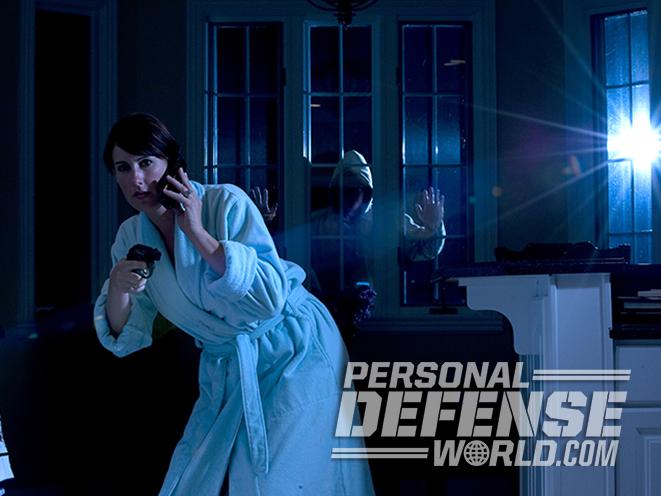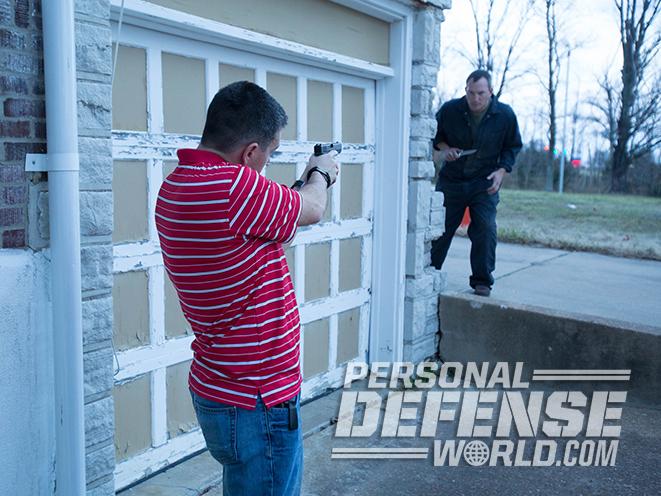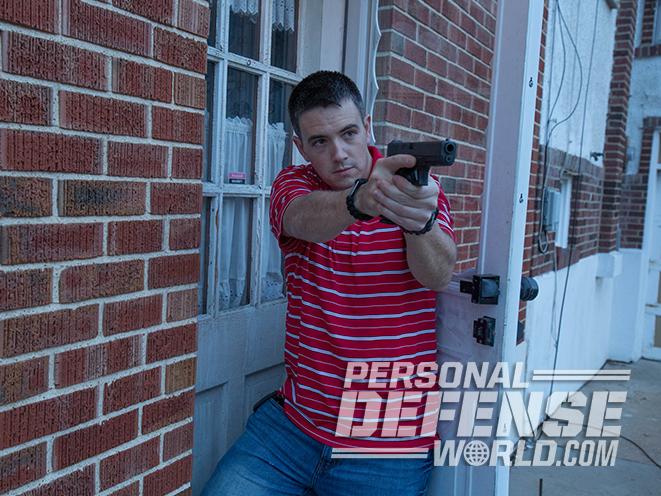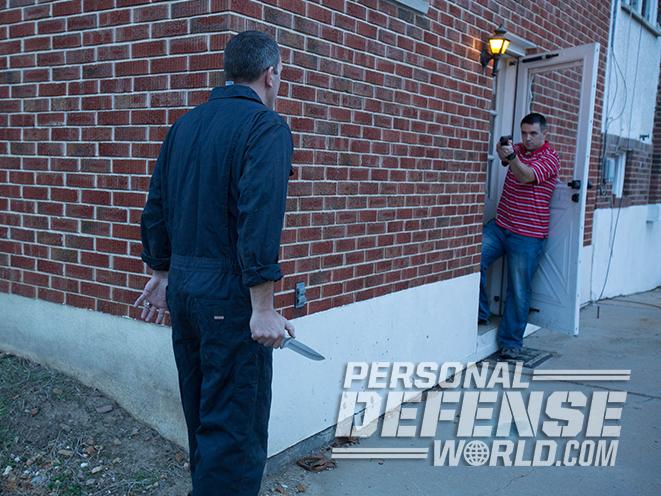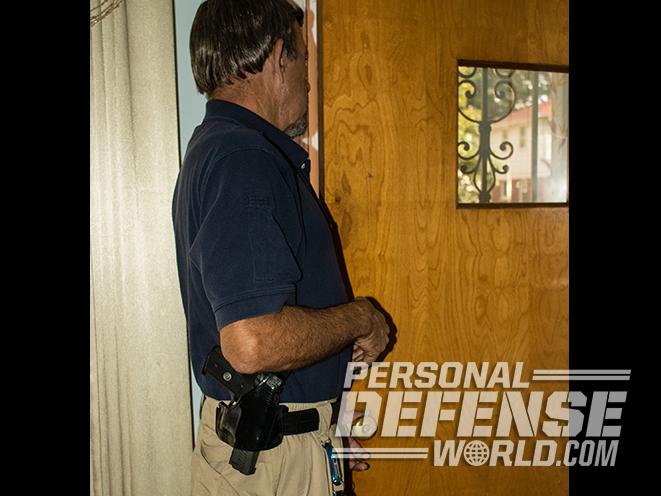How many times have you heard the phrase “A man’s home is his castle”? Well, it’s true, and the ancient English Common Law from which our own derives confirms it. However, just because your home is considered your castle, you aren’t allowed to have an execution chamber. Occasionally I hear someone bluster, “I’ll kill any stranger I find in my house!”
Well, there are a lot of ways in which that can go badly. Late in 2015, a woman in the Southeast awoke to the sound of someone entering her home through the front door. She and her husband lived there alone, and she immediately reached over and determined that her husband was still asleep next to her. She grabbed her pistol and, stepping out into her hallway, saw the shadowy figure of an adult moving toward her.
She raised her gun and fired. The person fell.
Advertisement — Continue Reading Below
The woman had just shot and killed her own adult daughter.
The young woman had a key to her mom’s home, and was expected there in a few days. But she had arrived days sooner than expected, in the darkness of the night, unannounced.
Many years before, in the same part of the country, I had served as an expert witness in another case of mistaken identity relating to home defense. After a bad storm, a wealthy homeowner had called contractors to do some repair work. In the dawning twilight one morning, he heard people outside and, rushing to the window, perceived a man to be on his property. He grabbed his gun—a snub-nose .38 that he had bought new but never fired—and blindly triggered what he intended to be a warning shot. The bullet struck the man he had contracted to do repairs, crippling him for life. The careless, overreacting homeowner paid a great deal of money for that and was lucky to escape being criminally charged.
Advertisement — Continue Reading Below
In both cases, the homeowner opening fire on an unidentified person created tragic, long-lasting results. In the second instance, the mistake was compounded. The man launched the shot from a gun that he had never fired before. By his own account, he did not aim and could not be sure where his bullet would or wouldn’t go when he intentionally pulled the trigger. A firearm is not a home alarm system; authorities almost unanimously forbid the firing of warning shots.
Home Away From Home
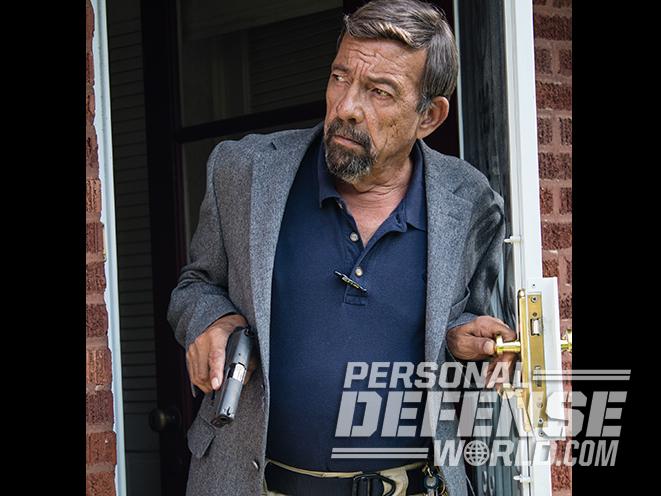
Advertisement — Continue Reading Below
As a rule of thumb, when you’re staying in a hotel or motel, your room becomes your domicile, and legally, it’s as if you’re in your own home. A year or two ago, one exhausted couple felt they could drive no farther and stopped at the first motel they came to, a rather seedy one, and a choice they would soon regret.
While the man was showering, the woman was horrified to find a stranger with a gun forcing his way into the room. When the husband emerged from the shower, the wife tossed him a gun they owned. In the shootout that followed, the husband was wounded, but he killed the assailant. Both seemed utterly convinced that, were it not for their legally owned weapon, the gun-wielding wild man probably would have murdered them. Of course, killing the intruder was ruled justified in this scenario.
However, one needs to understand that in a hotel or motel, the “Castle Doctrine” extends only to the four walls of the room. Some years ago in California, a young criminal justice major from out of state was told this but ignored it. He was in town for a firearms training class, and it was legal for him to have his gun unloaded in a locked case and separate from ammunition while out and about, but not to carry. California does not recognize out-of-state carry permits and has no provision for non-resident permits to be issued to non-residents. While in the hotel room, however, he was legal to lock and load.
Advertisement — Continue Reading Below
But, once he had done so, he made the mistake of strapping on his big Sig Sauer P226 in a shoulder holster, casually covering it with a coat and heading downstairs to the hotel’s restaurant. There, a server noticed the gun under his coat and called the police. The young man was arrested and criminally charged for illegally carrying a loaded and concealed handgun. Once he had left the hotel room itself and stepped into the hallway on his way to the restaurant, he was in a common area of the hotel and no longer in his domicile.
Out In The Open

Different states may have subtly differing laws in this regard. In Texas, prior to the recent legalization of openly carrying a gun, a gentleman who was one of 180 condominium owners in a complex decided to wear a gun openly while in the commons. Someone complained, and he was arrested. His defense, which ultimately prevailed, was that as a condo owner, instead of a renter, those common spaces technically belonged to him. The court sided with that argument, noting that since he owned 0.005 percent of the condo complex, he was on his own property instead of “in public,” and technically legal.
Advertisement — Continue Reading Below
Let’s go back to the individual’s own home. State laws will normally extend the Castle Doctrine privilege to “home and curtilage,” with the latter term meaning attached structures such as porches, carports and the like. While this is the law, juries sometimes apply their own values to a ruling.
Again and again, over the last several years I’ve seen cases where juries were extremely sympathetic toward individuals who defended themselves and their families against home invaders, but not so when said homeowner opened the door and went outside with a gun when they were alerted to some form of danger outside.
- RELATED STORY: Massad Ayoob’s 11 Pieces of Recommended Shooting Gear
It is as if, continuing the castle analogy, juries see you as the knight errant who lowered the drawbridge and marched out astride your charger to go on a crusade with your trusty weapon in hand. They see you as having “gone looking for trouble,” and can often be singularly unforgiving about it.
Advertisement — Continue Reading Below
One classic example is Hattori v. Peairs, the well-known 1992 case of the young Japanese exchange student shot by a young homeowner in Louisiana. Yoshihiro Hattori, 16, and the similar-age son of his host family were going to a pre-Halloween costume party when they came to the wrong address. Peairs’ young wife, seeing strangely dressed men trying to enter the home, screamed for her husband to get his gun. Rushing downstairs with a loaded Smith & Wesson .44 Magnum, Rodney Peairs jerked open his front door to investigate.
He and the two young men made eye contact. Seeing the gun, the American teen froze but the Japanese student came toward the homeowner, moving jerkily with a metallic object in his hand, oblivious to the gun Peairs had leveled on him and Peairs’ repeated shouts of “Freeze!” When they were only a few feet apart, the householder feared he was going to be disarmed and his family murdered, and he fired one fatal shot.
The object in Hattori’s hand turned out to be a camera. It was theorized that he acted as he did because he thought Peairs was part of the costume party, playing a gunman, and Hattori may have been trying to stay in character.
Advertisement — Continue Reading Below
Peairs was charged with manslaughter, and he was later acquitted. In civil court, however, he was absolutely hammered. When he and his attorneys appealed the judgment, the higher court rejected the appeal and upheld the civil verdict against him. The justices’ opinion contained this telling statement: “After a thorough review of the record, we must agree with the trial court…There was absolutely no need to resort to the use of a dangerous weapon to repel an attack, as, in fact there would have been no fear of an attack if Rodney had summoned help or simply stayed within his home.”
Shedding Light On Danger

Advertisement — Continue Reading Below
Twenty years ago, only SWAT cops and K9 officers would likely be found with lights attached to their firearms. Today, weapon-mounted lights are ubiquitous among cops and quite popular among armed citizens, particularly for home defense. However, it is important to remember that the armed citizen should not use this light for searching. Instead, maintain a separate, dedicated light in your free hand for that purpose. Why? Because you’ll be pointing a loaded gun at everything you look at, including innocent people you didn’t expect to be there.
The easiest way to get this point across is to compare a weapon-mounted light with a hunting rifle that has telescopic sight attached to it. None of us want to be in the same woods with the sloppy hunter who scans for game by sweeping his scope—and his fully loaded rifle—in every direction. This is just what a homeowner is doing when he or she searches with a weapon-mounted light.
Of course, this doesn’t mean we shouldn’t have scopes on hunting rifles or lights on guns. We’ll never know how many lives have been saved because the scope showed the hunter that what looked like a deer at twilight to the naked eye was actually another human. Similarly, we will never know how many tragedies have been prevented when the light at the end of the firearm showed the suspect was holding a cell phone, not a gun or a knife. It’s just that each of those devices must be used judiciously.
In the end, it’s all about logic, reality and common sense. So, come to think of it, is self-defense itself.
This article was originally published in ‘The Complete Book of Handguns’ 2017. For information on how to subscribe, visit outdoorgroupstore.com
